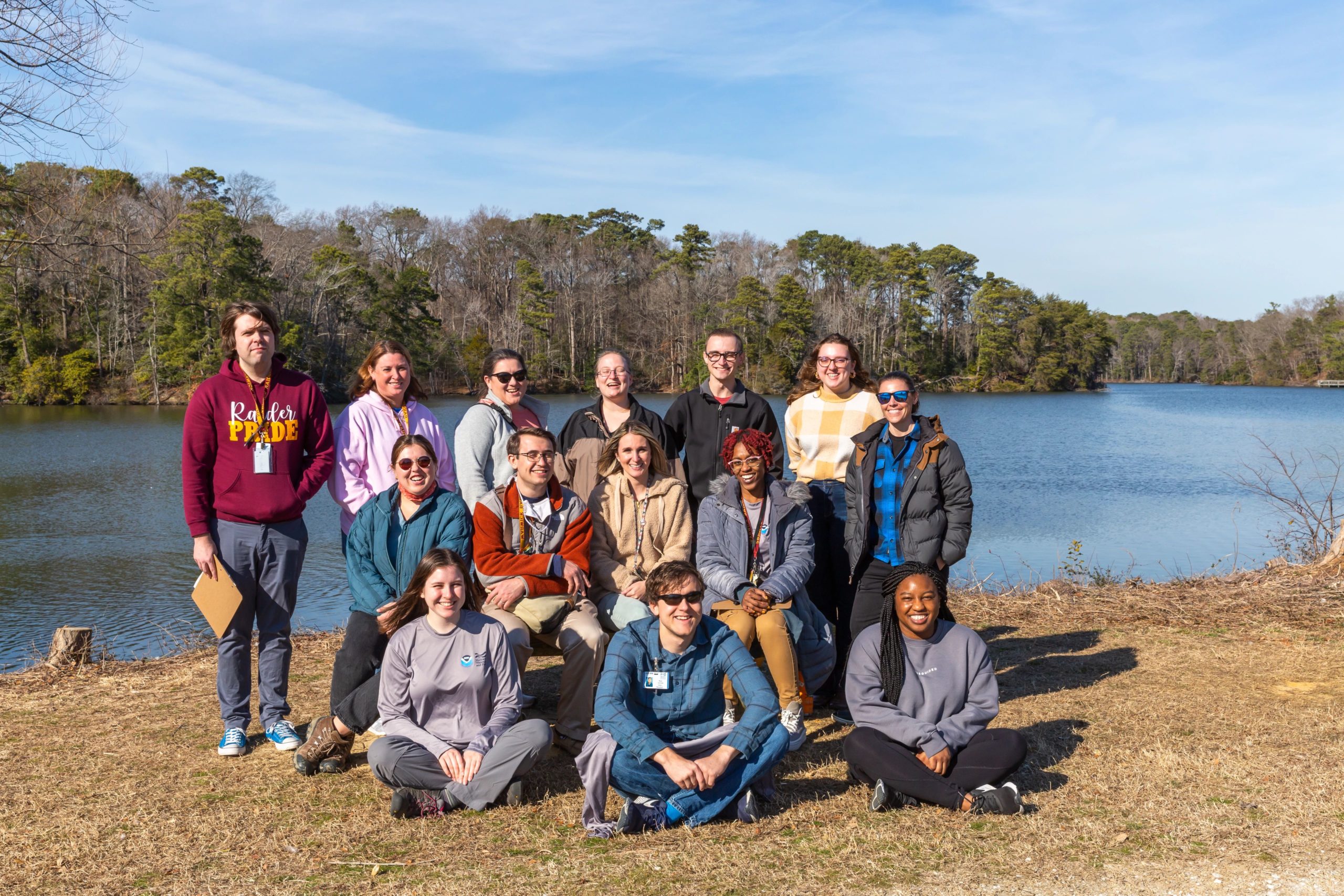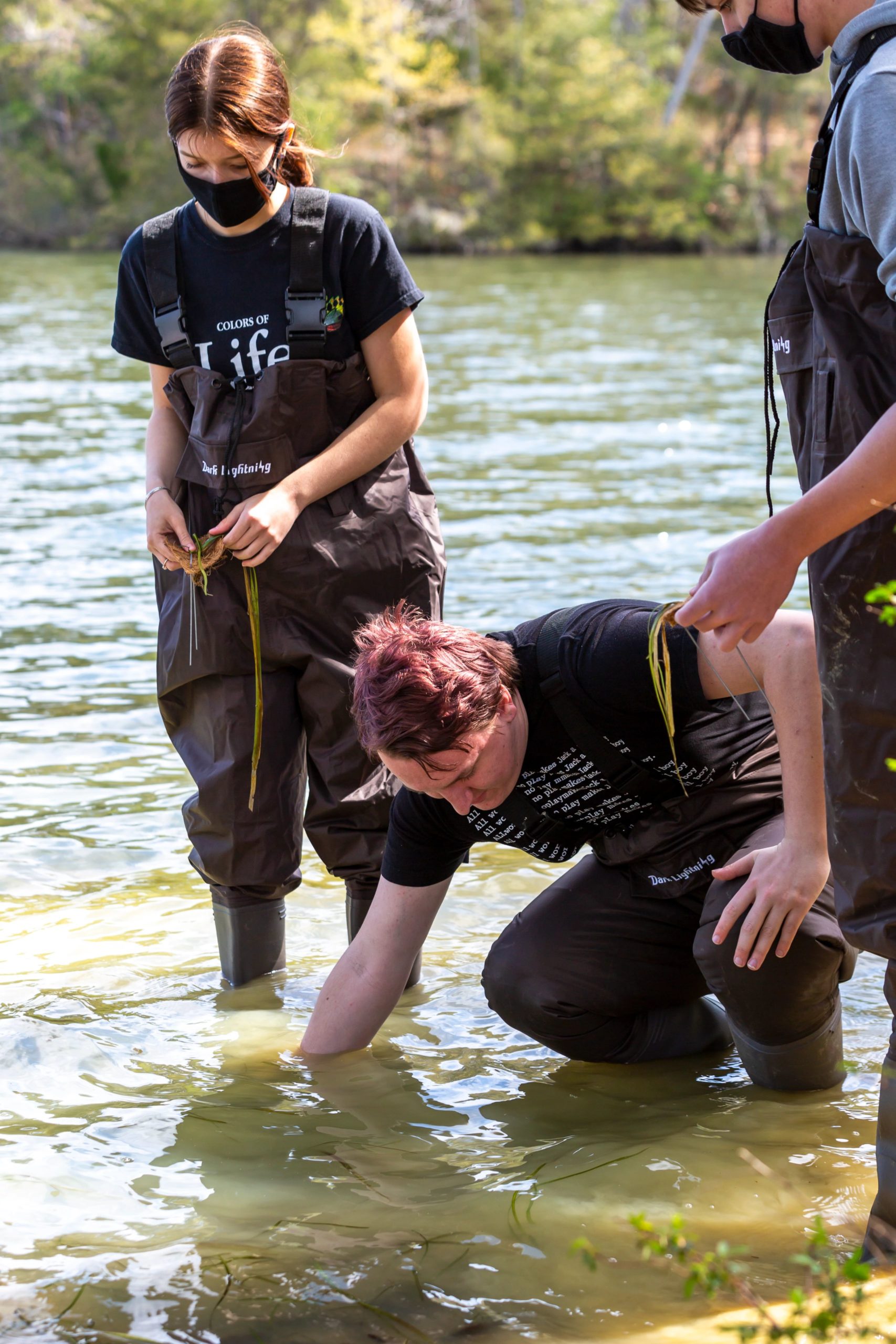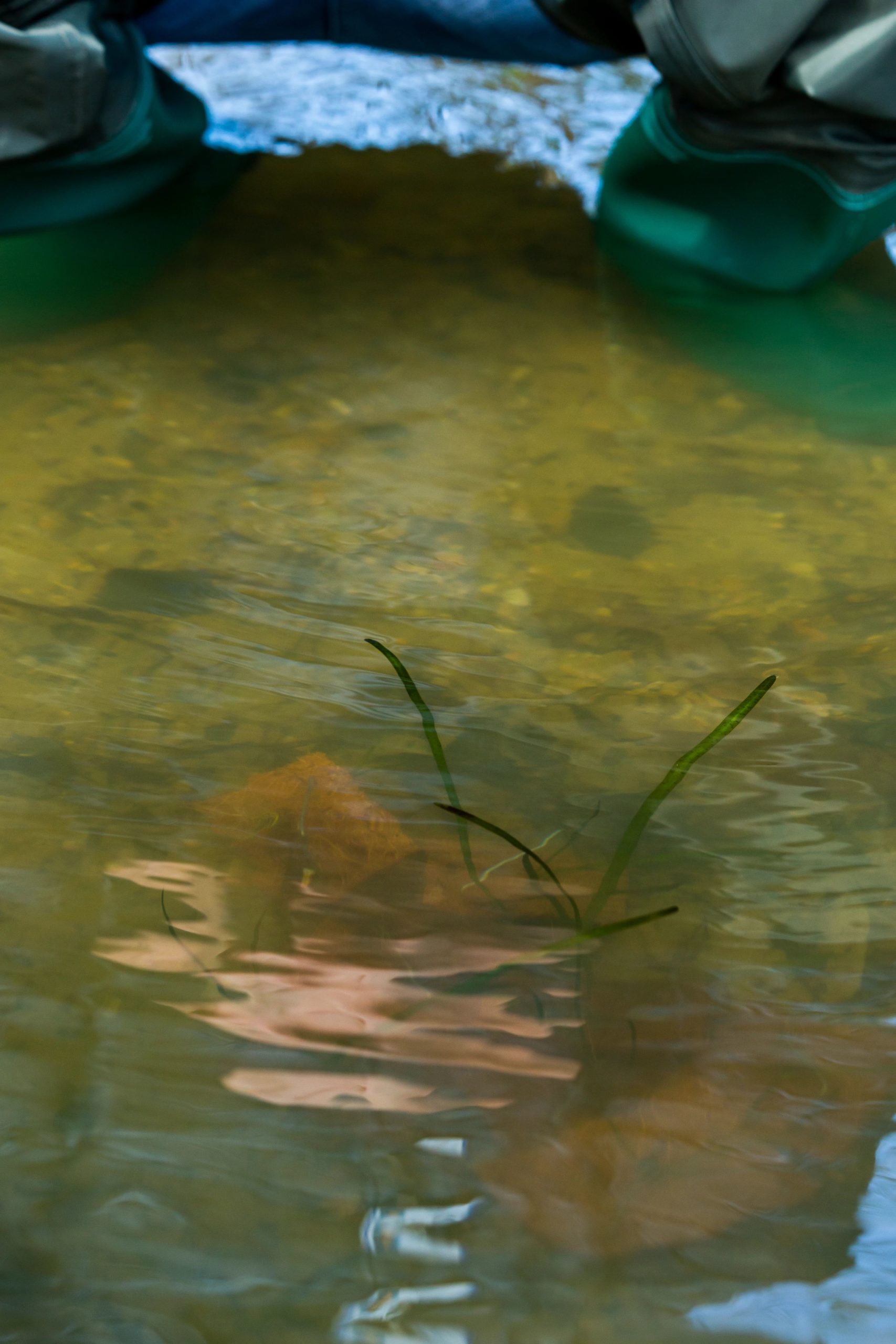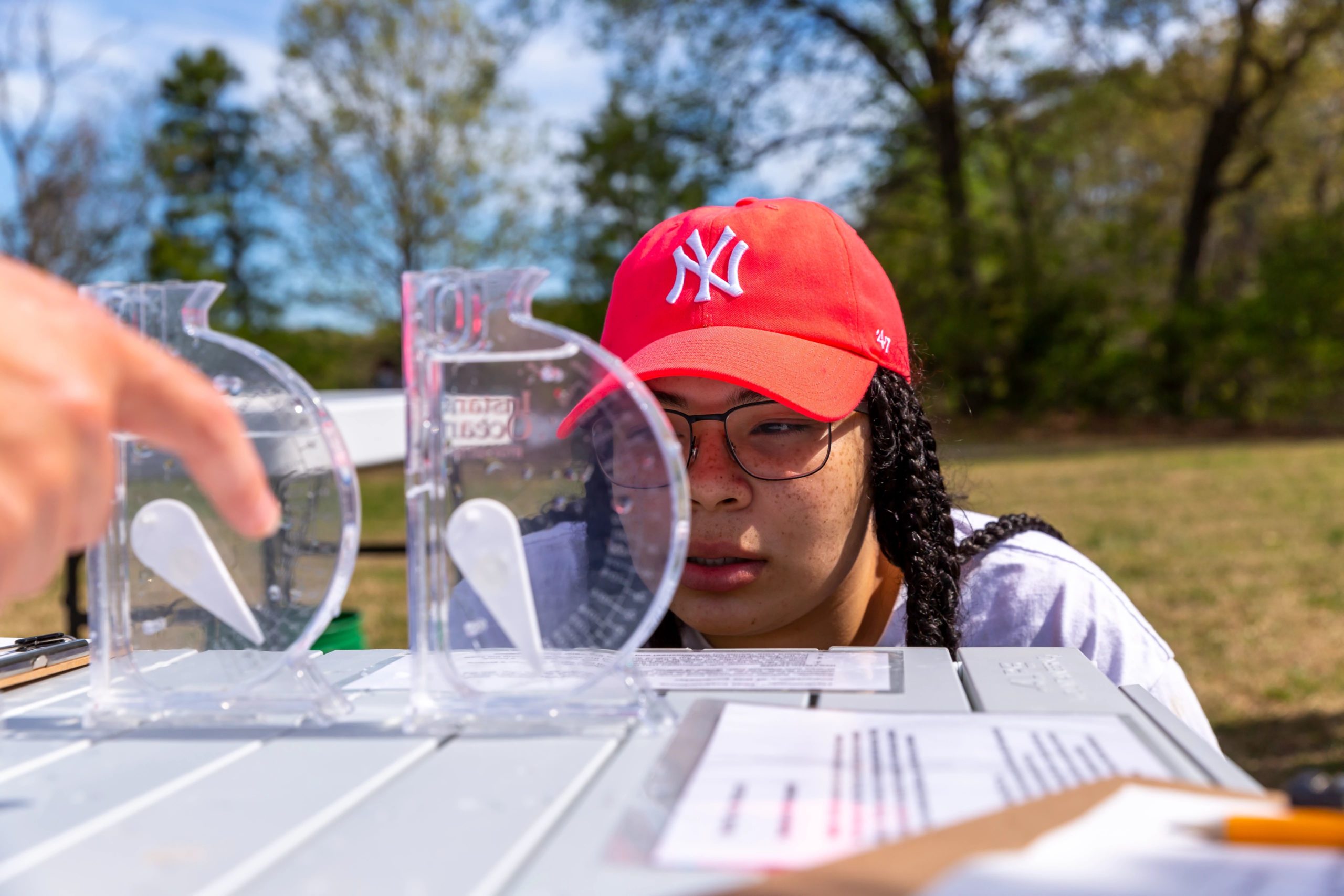The first year of B-WET
I am sure that it would come as no surprise to hear that The Mariners’ Museum and Park cares deeply about the Chesapeake Bay. The fact that our 550-acre urban oasis abuts the James River means that we have a large responsibility to keep the Park and Mariners’ Lake clean and healthy.
Our amazing Park team works day in and day out to make sure that the Park remains in the incredible condition that it is in so that all can come to enjoy its beauty. The team also monitors the health of the Lake and Kettle Pond to ensure that the water is safe for the wildlife that rely on it and call it home.
Maintaining the health of this large body of water is no small challenge. Occasionally, this responsibility requires us to ask our community for assistance. Fortunately for us, we have had quite a few people step-up to the challenge.
It started with a grant
In 2021, The Mariners’ Museum and Park was awarded a grant from the National Oceanic and Atmospheric Association (NOAA) to conduct a three-year restoration project on Mariners’ Lake. This particular bay watershed education and training grant, known as B-WET, is an environmental program for K-12 students that is focused on hands-on, place-based watershed learning. Our program works with 9th-grade high schoolers in the Newport News Public Schools.
The students who participate in this program learn about local environmental issues and contribute to community solutions. By doing so, the students are actively engaging in a meaningful watershed educational experience (MWEE). MWEEs are valuable experiences that can strengthen a student’s connection to their community and the environment around them. With their help, we can improve the water quality of Mariners’ Lake and help positively impact the Chesapeake Bay as a whole.
Restoring Mariners’ Lake
So, what exactly is this restoration project?
Over the next three years, students will plant aquatic plants called Vallisneria americana, or eelgrass. Eelgrasses can stabilize the ground with their roots which makes the sediment of the Lake more stable. As a result, less dirt or sediment will be kicked up in the water. The planting of the eelgrass will improve the water quality of Mariners’ Lake by making the water clearer, allowing for other aquatic plants and animals to thrive.
Challenges and classroom visits
For the pilot year of B-WET, we recruited seven biology, environmental science, and AP environmental science teachers from Warwick and Menchville High Schools to participate. Our Education and Park teams knew we’d have to work together through trial and error to determine the best ways to carry out the grant requirements. Going into the school year, our Museum team knew that there would be two significant challenges we would face: navigating classroom visits through a global pandemic and keeping the grasses alive.
We knew that COVID would not allow us to visit with the students in person.

Thankfully, we were able to meet with the students virtually to connect with them and introduce them to the project that they would be helping us with this year.
As the year progressed and vaccines became readily available, we were able to go into the classrooms to interact with the students face-to-face.
The grasses, however, were another challenge entirely. One of the major parts of the program was to have the students grow the grasses in their classrooms so they could take ownership of the restoration project. The plan was for the Museum to provide the equipment and grasses; the students’ job was to keep the plants alive.
We quickly realized how much of a challenge this was going to be.
Within the first few weeks to months, many of the teachers began to express concern over the health of their grasses which had begun to turn brown and slimy. As it turns out, eelgrass can experience a die-back, called melting, when they are shocked or moved from one environment to another. We had no idea the melting would cause us so much trouble.
Between the die-back, algae problems, and the power getting turned off for school breaks, we had our work cut out for us! With the help of a few dedicated teachers, we were able to have some growing success and learned a lot about how to best keep the grasses. Unfortunately, not all of the grasses made it. However, the ones that survived were planted in Mariners’ Lake!
The field visits
The grasses were planted in Mariners’ Lake throughout April. The students who attended the field trip took part in three different activities: grass planting, measuring and comparing the water quality of Mariners’ Lake and the James River, and working through dichotomous keys to identify different tree species within the Park.

Before getting into the water, the students had to put on waders to help keep them dry. Initially, many students were hesitant about sporting waders. After all, they certainly are not the most fashionable things to wear. However, once they had them on, many became very excited to plant, and some even showed interest in wearing a pair to school!
Of the 543 students that we visited at the beginning of the school year, 397 came on the field trip to the Museum. Each student that attended was able to plant one grass with some planting two or three! It’s estimated that 450 grasses were planted in Mariners’ Lake this year. We hope that these grasses will continue to grow and put out new grasses to help stabilize the ground.
Lessons for the coming years
What are some big takeaways that we have learned from this year? We need to figure out the best way to grow the eelgrasses, for starters! Fortunately, Keaira Montgomery, one of our graduate interns from Christopher Newport University, will be helping us with this! She will be conducting different experiments to give us better insight into the best way to grow the eelgrasses and keep them alive.
Secondly, we will need to find a new planting site for future years. For our year-one planting, we were able to plant the grasses right by Lions Bridge off of the Noland Trail. But in the coming years, the dam at the bridge will be under construction, meaning that we will not have access to the planting site. The challenge for us will be finding a spot along Mariners’ Lake that is shallow and accessible for all students’ physical abilities.
Lastly, we have to figure out how to scale this program up to cover every one of the 9th graders in the Newport News Public High Schools! Our focus was on two schools, seven teachers, and 542 students for our first year. However, for years two and three of this grant, we will be covering six high schools, about 25 teachers, and roughly 2,000 students each year.
No matter how many challenges we might face, the Mariners’ is committed to the success of this program which aligns with the Museum’s mission of connecting people to the world’s waters – because through the waters — through our shared maritime heritage – we are connected to one another. And with the help of local high school students, we will be able to improve the water quality of Mariners’ Lake so that it can sustain wildlife for years to come.

